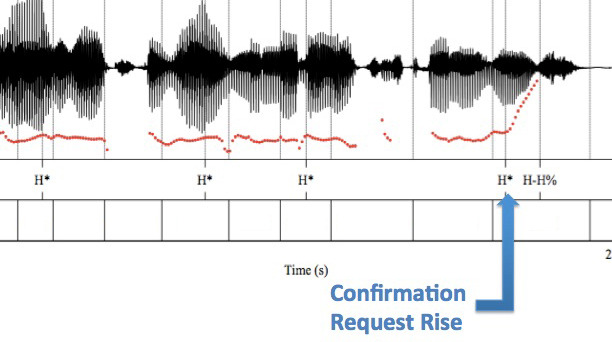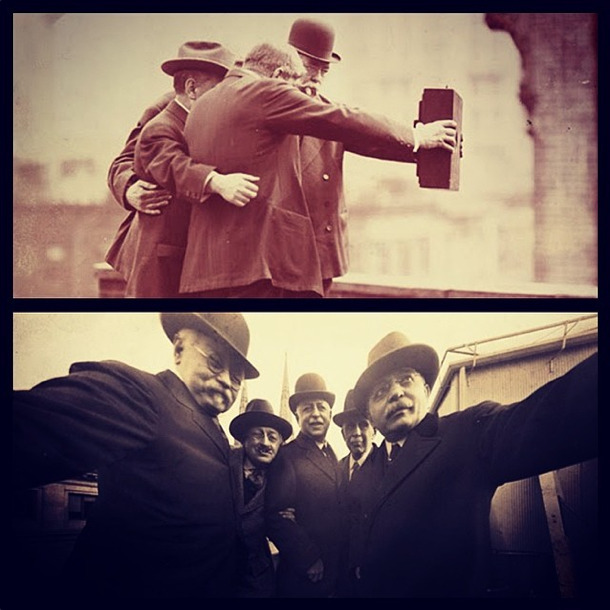

“Men don’t think they do it, but they do,” explains Amanda Ritchart, a linguistics grad student at UCSD.
‘It’ is uptalk, the oft-mocked conversational style that uses a rising pitch at the end of utterances. Here’s a classic example:
A coffee shop barista asks a person for his or her name. The person says their name almost as if it were a question (Mike?, Isabelle?), even though we know that this person is not actually questioning his or her name.
Although it’s associated with the caricature of valley girls (as seen in the 1995 movie Clueless), some linguists date it to the 1950s, while others argue it is centuries old.
To investigate the phenomena of uptalk, Ritchart and Amalia Arvanti gathered 23 undergraduates (who were native speakers of SoCal English*) and gave them two tasks:
- Use a map to give directions to a listener.
- Describe a sitcom clip they had just watched. (Scrubs and How I Met Your Mother were the chose sitcoms, in case you were wondering…)
“For young speakers in Southern California, no matter the gender, the ethnicity, the socioeconomic background, everyone uses uptalk,” Ritchart says. The researchers found that uptalk could also serve a strategic purposes such as confirmation (“are you following me on this?”):
When giving directions, a non-uptalker would use a declarative sentence, without a rising inflection. But uptalkers did use rises, as if they were implicitly asking the listener to confirm that they were being understood: “Go all the way to the right in the middle where it says Canyon Hills?” Both the men and women in the study used uptalk 100 percent of the time in these so-called “confirming” statements.
In such instances, uptalk suggests confidence or paternalism (maybe even coercion). Another technique the researchers identified was ‘floor-holding’ — where a speaker, anticipating being interrupted by the listener, tries to fight it off by using a rising tone at the end of the statement:
In the study, women spoke with the floor-holding rise nearly 60 percent of the time: “O.K., so go toward Warren” (pronounced as a high-rising “Waa—REN?”). Men used it only 28 percent of the time, tending instead to maintain steady voices, in a plateau. Amalia Arvaniti, a co-author of the study who is now head of the English language and linguistics department at the University of Kent in England, said, “It could indicate that young women were generally interrupted more than men and so it’s a defense mechanism.”
It’s easy to dismiss uptalk as the language of airheads, but in fact, it appears that it can be quite useful.
Arvanti added that the research doesn’t imply that Uptalk doesn’t happen outside of Southern California or that young men have only recently picked up uptalk: ”The primary motivation was to document the form and function of uptalk in SoCal because there was so little systematic research on this particular variety compared to, say, Australian and New Zealand English uptalk and even UK varieties that uptalk.”
*11 male and 12 female. 15 monolingual and 8 bilingual. 12 self-identified as Asian, six as Hispanic, 5 as White. Using the MacArthur Scale, the speakers were grouped into socioeconomic status classes: Lower (4), Middle (13), and Upper (6).









